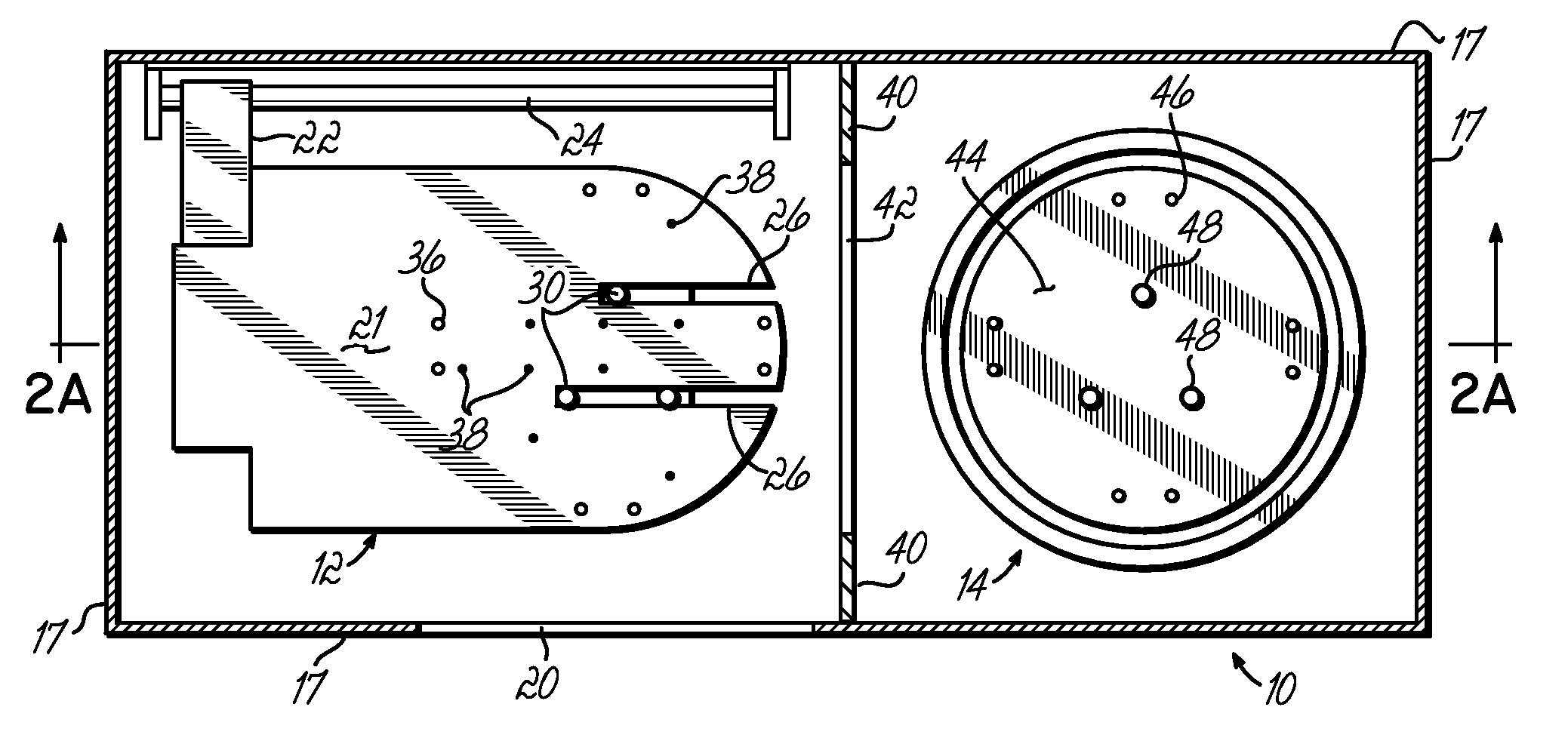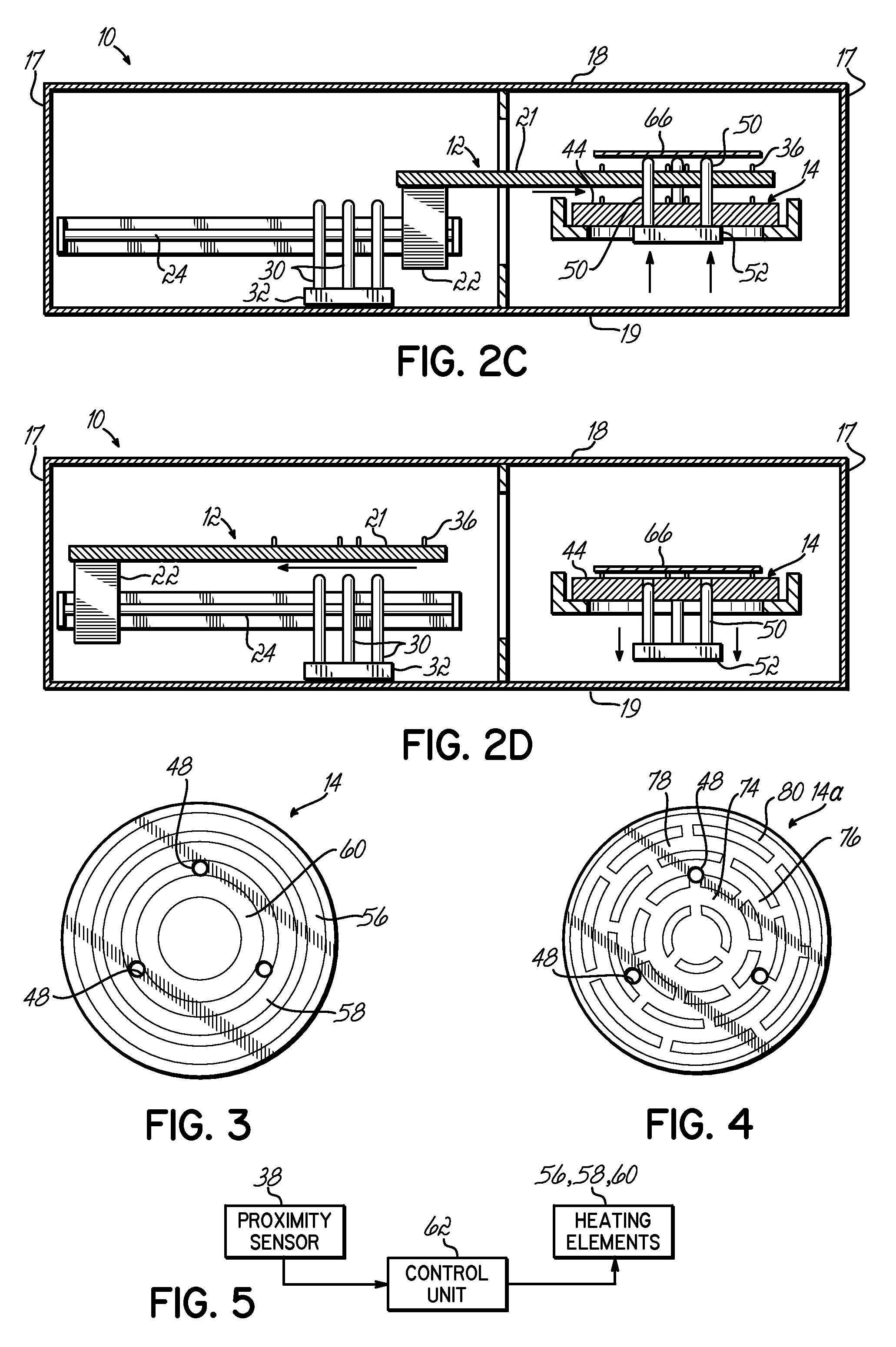Inline physical shape profiling for predictive temperature correction during baking of wafers in a semiconductor photolithography process
- Summary
- Abstract
- Description
- Claims
- Application Information
AI Technical Summary
Benefits of technology
Problems solved by technology
Method used
Image
Examples
Embodiment Construction
[0018]According to the present invention, a semi-conductor wafer is heated on a hot plate during the processing steps and generally subsequent to application of a chemically amplified resist.
[0019]The topography of the bottom surface of the semiconductor wafer is measured during processing immediately prior to locating the semiconductor wafer on a hot plate. A plurality of distances from a common plane to the bottom surface of the semiconductor wafer are measured. That information is then transferred to a control unit for the heating plate. The hot plate in turn is controlled to establish a plurality of heating zones corresponding to the measured locations and selectively heat areas of the semi-conductor wafer on the heating plate to compensate for differences in measured distances.
[0020]An apparatus or module 10 for practicing the present invention includes a cool plate 12 and a hot plate 14. The module 10 is surrounded by an exterior casing 16 which includes sidewalls 17 and top a...
PUM
| Property | Measurement | Unit |
|---|---|---|
| Temperature | aaaaa | aaaaa |
| Distance | aaaaa | aaaaa |
Abstract
Description
Claims
Application Information
 Login to View More
Login to View More - R&D
- Intellectual Property
- Life Sciences
- Materials
- Tech Scout
- Unparalleled Data Quality
- Higher Quality Content
- 60% Fewer Hallucinations
Browse by: Latest US Patents, China's latest patents, Technical Efficacy Thesaurus, Application Domain, Technology Topic, Popular Technical Reports.
© 2025 PatSnap. All rights reserved.Legal|Privacy policy|Modern Slavery Act Transparency Statement|Sitemap|About US| Contact US: help@patsnap.com



